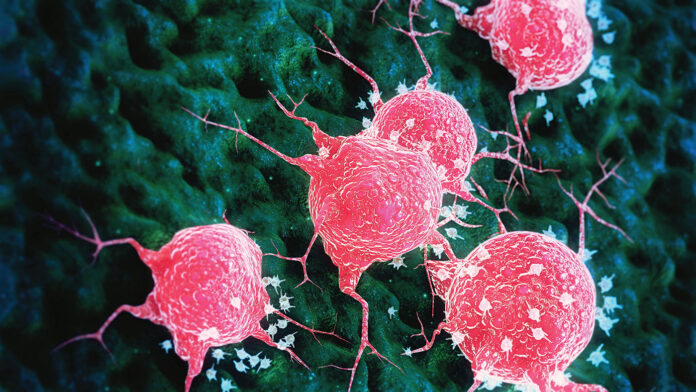
New research reveals that an important priming phase makes breast cancer cells previously exposed to sublethal drug concentrations refractory to higher doses.
Using spatiotemporal modeling, a University of Ottawa (uOttawa) team found, specifically, that chemotherapy-resistant breast cancer cells throughout the cellular concentration gradient have higher expression of the solute carriers SLC38A7 and SLC46A1 and elevated intracellular concentrations of their associated metabolites. Reduced levels of SLC38A7 and SLC46A1, meanwhile, diminish the proliferative potential of cancer cells, and elevated expression of these SLCs in breast tumors from patients correlates with reduced survival.
Based on these findings, the team suggests targeting specific metabolic vulnerabilities may help defend against chemoresistance.
Their work was published yesterday in Cell Reports. It was led by the lab of Julie St-Pierre, PhD, at the uOttawa Faculty of Medicine. The first author is Yannick Audet-Delage, PhD.
“By studying the evolution of therapy resistance acquisition in cancer cells, we have gained important knowledge about the molecular mechanisms implicated during therapy resistance acquisition. In addition to the known major mechanisms of resistance, we identified several cellular programs that are solicited at different timepoints during the acquisition of resistance, revealing new potential treatment opportunities,” says St-Pierre, a Canada research chair in cancer metabolism and professor at the uOttawa faculty of medicine.
Since few treatment options are available following the emergence of chemotherapy resistance, it is important that new approaches to treating resistant tumors are found.
Instead of the typical approach comparing therapy-resistant cells to therapy-sensitive cells, this team aimed to model the evolution of chemotherapy resistance over the passage of time.
This approach stems from the observation that drug concentrations within solid tumors decrease with the amount of distance from blood vessels. During initial treatment, cancer cells located further away from blood vessels are exposed to lower doses of drugs. Eventually, they are submitted to higher doses as vessel-proximal cells are extinguished over time.
Audet-Delage said, “Our approach to chemotherapy resistance is novel because we considered the phenomenon as a dynamic rather than spontaneous event.” He added that, “These results support the use of more intense treatment modalities, such as dose-dense chemotherapy regimens, to help prevent the development of therapy resistance in patients.”
Using a systems biology approach combined with high level analyses, the uOttawa-led research team strived to better understand observations made during a study St-Pierre’s lab published in the scientific journal eLife in 2021. In the new Cell Reports paper, the team focused on the mechanisms of SLCs, which mediate the transport of a range of solutes across cellular membranes.
They studied breast cancer cell models representing the spatiotemporal exposure of solid tumors to two anthracyclines commonly used in cancer treatment, doxorubicin and epirubicin. These models were analyzed via transcriptomics and paired cell and media metabolomics.
Therapy-resistant cells, they found, showed higher expression of SLC38A7 and SLC46A1 – and elevated expression of these SLCs in breast tumors correlated with reduced survival. Conversely, reduced levels of these transporters diminished the proliferation of cancer cells.
These observations about SLCs, which are increasingly emerging as targets for therapeutic interventions across a range of disciplines, could lead to new cancer treatment approaches.












